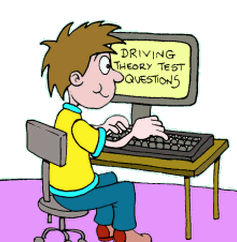What to do at level crossings
When you are learning to drive you may well not come across a level crossing, depending where you live. But as a driver you certainly will come across level crossings and will need to know how to proceed safely when you encounter one.
There are various methods in which level crossings are controlled. Often there will be gates or barriers there and a lot of them have lights, but there are some where you must make the decision yourself to cross or stop.
Often a warning sign with a train will be displayed in advance and that tells you the level crossing you are approaching does not have a barrier or gate. There will also be a sign telling you there are lights, if there are lights.
When you see the lights for the crossing, look to see if they are on. If the lights are off, this tells you that there is no train coming, but before crossing still check just in case the lights are broken.
You will notice there are two red lights at the top and an amber one underneath. A steady amber light means you should stop unless it is unsafe to do so - just light on a normal traffic light.
Flashing red lights indicate that it is not safe to cross as the train is coming and therefore you must stop. Note that if a train passes you but the lights stay flashing, don't get impatient - there must be another train coming. Often on a line, for whatever reason, trains going in different directions may arrive at roughly the same time followed by a large gap, so you should just be patient and wait.
Related Articles...
What causes accidents: speed
There is a well known saying from safety campaigns which simply says that "speed kills".
Although many people think that you have to be travelling really quickly in order to make an impact...
Risk factors when driving: snow and ice
When the snow is falling, there is one big problem - it is hard to see far infront. So like fog, reduced visibility is the problem with snow. And when there is heavy snowfall it can be very hard...
What to do if horses are on the road
It may sound quite rare, but actually on country journeys you will from time to time encounter horses and their riders using the road. And you may also come across other animals too.
When you...
Selecting low gears when driving
When you are driving, you will just learn to change gears without really thinking about what you are doing and when. But generally you will change up gears the faster you are going, and this is...
Your car and the lights on it
We are all used to seeing cars in the dark, and also seeing their indicators in the day to communicate to other car drivers. But what must you ensure with regard to the lighting of your...
What to do if you breakdown at a level crossing
Driving is potentially dangerous, but it is important not to worry about things that could happen when driving but at the same time you should know what to do in the unlikely event that something...
What causes accidents: overtaking
When you overtake a vehicle, there are often many things to consider.
First of all you need to ensure that it is, as far as you are aware, safe to do so. Therefore don't overtake close to...
Driving and Eyesight Requirements
If you require glasses in order to meet the requirements for driving legally, then you must ensure that you wear them whilst you drive (or corrective lenses).
There are some conditions that...
Driving Theory Stopping Distances
Stopping distances refer to the distance that you car is going to travel from the time that you decide that you need to press the brake through the time that the vehicle physically stops...
How to learn UK road signs
Learning UK road signs is something that will unfortunately require you to
take the time to study them all. Many signs turn up in the theory test so
you do need to take the time to do this. But...
Back to home page of driving theory test questions

